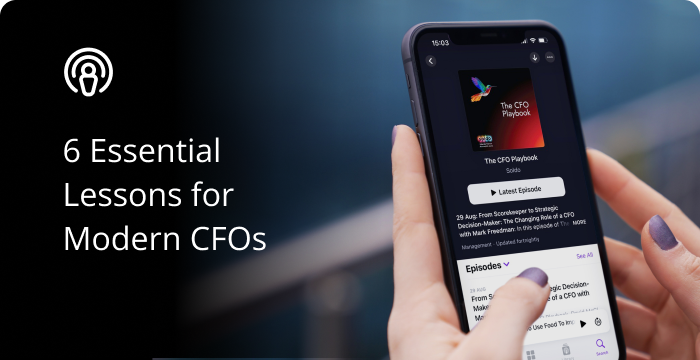Fintech in 2020: This Year’s Big Trends with Tanya Andreasyan
An interview with Tanya Andreasyan
Tanya Andreasyan is MD and Editor-in-Chief of Fintech Futures, overseeing its digital and print publishing operations and strategy. Prepaid card provider, Soldo, asks her about her extensive understanding and knowledge of the banking/financial services technology industry and its participants, including vendors, financial institutions, consultants and other third parties, on global, regional and domestic levels. She specialises in covering banking tech, fintech, paytech and regtech markets.
What are the key trends that you’re seeing in fintech for 2020?
Over the next couple of years I think we’ll see two things.
The first is “componentisation”, the continuous so-called composable structure of banking. It was Mambu- a banking technology vendor – which coined the term ‘composable banking’ and it applies not just to banking but to most products and services. The monolithic platform will no longer be viable or acceptable to consumers; the direction of travel is now towards components, bespoke services which comprise best-of-breed or the most convenient components, which may come from different technology providers or institutions. In banking, this is enabled by the Open Banking protocol. You no longer have to get your checking account, your current account, your savings account or your mortgage from one provider or from one big bank, you can shop around and connect what you want together.
Furthermore, thanks to Open Banking, the big banks are now starting to give you the opportunity to shop around through their own apps where you can, for example, shop for mortgages or savings accounts. There are plenty of other examples of this, like Raisin (a savings marketplace) and Yolt, the multi-provider money management app. ING allows you to look at all your accounts from one app, switch providers, and discover utility bill savings, so it’s much more of a service-oriented offering. We’ll no longer have one monolithic service, and this will continue to unlock competitive and challenging ideas.
It’s the same on the technology side. The providers are becoming ever more nimble. They’re also trying to componentise their solutions. So if you’re buying a banking system, for instance, the vendor won’t offer you the kitchen sink; you’ll be able to pick and choose the components that you want and which will most resonate with your intended market. Often, they will partner with other providers for additional tools, products or services that they don’t have in their portfolio; so digital banking is definitely becoming more of a buffet.
When you look at the traditional banks going through these technology renovation projects, you can see this trend as well. Traditional banks creating standalone digital platforms, like Mettle from RBS, or Santander’s Openbank – instead of using their incumbent tech providers, they are moving towards niche suppliers like Mambu, Thought Machine, Yobota and nCino to build nimble, modern solutions which are easy to install and launch, so that they can go to market more quickly with a focused and relevant offering.
Banks are moving towards niche suppliers to build nimble, modern solutions which are easy to install and launch, so that they can go to market more quickly with a focused and relevant offering.
It seems to me that the deck of cards has really been thrown up in the air as to who is going to own the customer. If I’m no longer going to use my banking app, but a Yolt or a Dozens instead, that takes us into new territory in terms of marketing banking services, doesn’t it?
Absolutely. It’s a whole new world out there. Look at the Apple Card – it’s backed by Goldman Sachs, but essentially it’s an Apple product. Uber has recently launched a credit card too: it’s supplied by Barclays but the consumer gets it from Uber and it’s Uber branded. So for the marketers and on the customer acquisition side it’s a whole new minefield which will get ever trickier for newcomers.
OK, so componentisation is empowering customers, getting banking services to market faster and frustrating marketing professionals. What’s your second trend?
The other big one, for me, is customer-centricity. Now, I know that’s not new. But it’s moved from everything being designed around the customer to everything being personalized for the customer.
In the past, all the technology, processes, operations and the rest were built around the product. So you could be a customer of several products, but that would put you in several different buckets; nobody had an overview of the whole customer, even within a single organisation. The big banks have tried to change this because they have understood the threat from nimble fintechs which put the customer at the centre of their propositions.
But not every customer is the same and not every customer has or wants the same products, so the next step is to personalise each offering and experience to the individual customer. That is becoming more accessible and available thanks to new technologies such as machine learning and artificial intelligence. AI really helps to understand and process all the information about a customer; and ideally apply it in such a way that they get product recommendations, communications and app experiences that are relevant to them.
Won’t the same machine learning and AI tools also use other sources – like credit agencies, social media scanning etc. – to work out that, say, Tanya is a great saver, but I’m not, and we’ll get different rates because of it? It’s in the bank’s interest, right?
Oh, absolutely. In theory, if it’s applied correctly, these tools will create the best outcomes for everyone. The technology is there to make sure that the institution benefits by not giving you a massive loan knowing that you can’t repay it, and at the same time giving me a better loan rate because I know that I can repay it and I’m a good customer. Similarly, it should mean many more marginal cases are approved.
AI has been a really hot topic in 2019, but if you recall, when it originally came to the fore AI mainly revolved around service tools like chatbots. Today, there’s a clearer view of how we can apply it to be of genuine benefit to the financial services industry and customers alike. It’ll continue to evolve into beneficial applications as opposed to just AI for AI’s sake.
The same is true of things like machine learning and robotic process automation in the back office of the institution. Again, these tools are applied to automate more manual or basic legacy processes, to free up staff to be able to better serve the customer. RPA has been applied with different degrees of success, but as these technologies evolve there are great opportunities to be had.
One caveat, though. AI is not going to do anything unless it has rich and high-quality data to work with; and bad data doesn’t necessarily flag itself easily – especially in legacy systems. Just because you have data doesn’t mean that it’s usable.
Another key point with AI, and I think this is something that smart businesses are appreciating very rapidly, is that AI working in combination with humans – a human-centric approach – is proving most effective. An automated chatbot by itself isn’t going to move the needle on efficiency or customer satisfaction. But a blend of the human touch and AI; knowing when to use personalised services so a human can step in and take action in conjunction with technology, is a powerful combination. I expect technology to assist humans in the workplace rather than just replacing them.
So this is, for example, triaging customer service calls. There is a right time to flip from a digital experience to human interaction…
Exactly. Human-Centred Design tells us that AI is there to assist us – whether as customers or staff. If you look at a financial institution and the people who work there, I’m sure there are jobs that AI can do. But at the same time, AI should only be implemented to assist those people to do their job in the best way possible or to free them up to do something that will benefit the institution and its customers.
In your experience, are there any trends that held a lot of promise this year but turned out to be duds?
Oh, certainly. But that’s the whole idea. Very few ideas are truly rubbish: some are good but not executed correctly; some are a bit ahead of their time. So I’m not overly critical. Banking app, Loot, fell by the wayside this year. BBVA’s Denizen has announced its closure too; citing an inability to achieve scale. I think in 2020 we’ll see some implosions, some acquisitions and certainly some sector consolidation.
I also won’t be the first person to mention blockchain. In 2018, blockchain and crypto were red hot; but today it’s a different story.
An automated chatbot by itself isn’t going to move the needle on efficiency or customer satisfaction. But a blend of the human touch and AI; knowing when to use personalised services so a human can step in and take action in conjunction with technology, is a powerful combination.
But corporate blockchain is really strong. For them, blockchain’s a brilliant system of record. They just don’t want to decentralise.
Blockchain has great applications and use cases. Trade finance, for example, has really benefited from blockchain solutions because there’s a need for the database and there’s a need to automate. In the corporate space, when we’re talking about dealing with corporate transactions, again, it’s a fabulous system of record for processes. But do we need blockchain everywhere? Payments on the blockchain for consumer banking? No, we just don’t.
What else is getting you excited for next year?
Open Banking and real-time payments spreading across the world. It’s a superb, modern initiative, led by Europe. But Canada is also working on its Open Banking initiative, so are Australia and New Zealand. Even the US, a country which still loves cheques, is making great strides. This stuff is overdue, innovative, and very powerful, because at the end of the day, it’s the consumer that benefits.
What we did so well with Open Banking in Europe is creating the strong legal and regulatory foundations. It meant consumers could have confidence.
That’s the whole idea: it created trust in the space and consumers know that it’s backed by the regulator. That said, we’ve got a way to go. There are plenty of articles, polls and statistics; many of which contradict each other, which suggest that some people are still worried by Open Banking.
It varies from age group to age group. It varies from country to country. And it varies within different demographics as well; your background and education. I’m sure when fridges were first introduced, there were loads of people who didn’t trust fridges and kept their food outside on the balcony. These things always take time to bed down. What we haven’t yet seen is an Equifax-style “never event” to set Open Banking back. So Open Banking still has to make its mark, and there will be bumps in the road; but it is an exceptional driver for digital banking, and we haven’t yet seen the best that Open Banking has to offer.
This interview is part of a series by Soldo, the prepaid company card solution that makes your expense accounting simple. You can read more interviews from Soldo’s interview series here.








